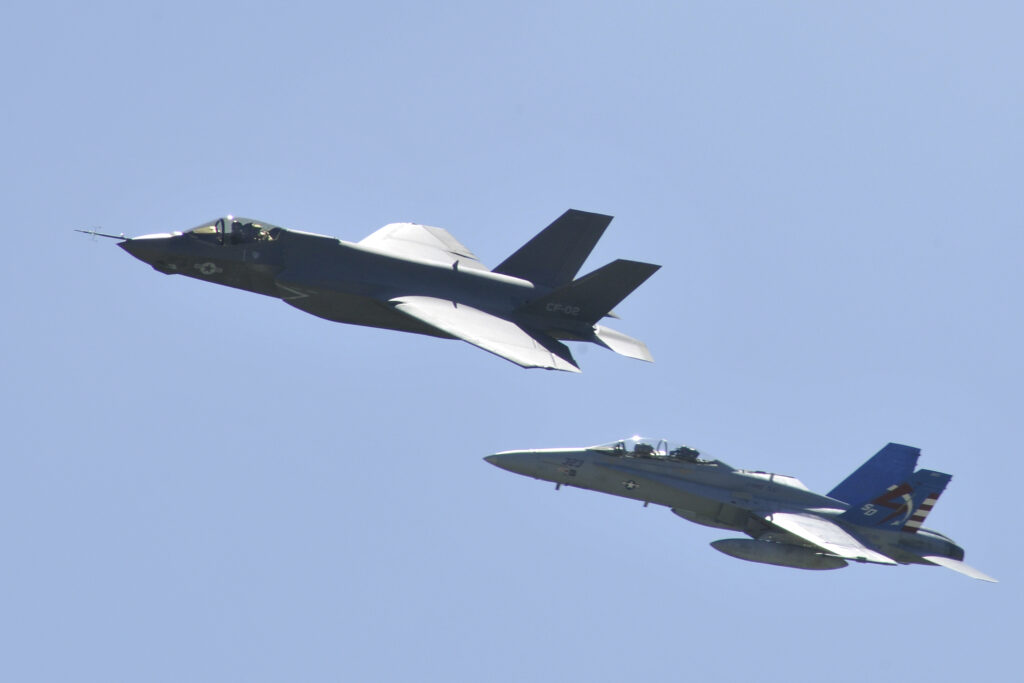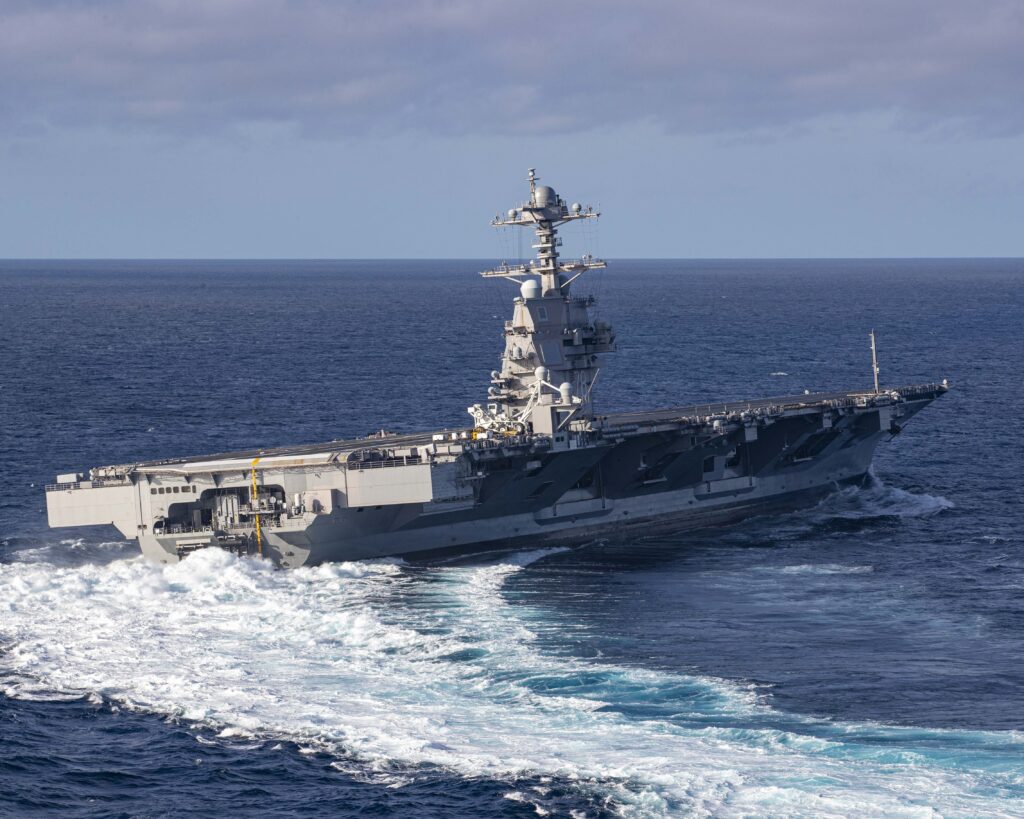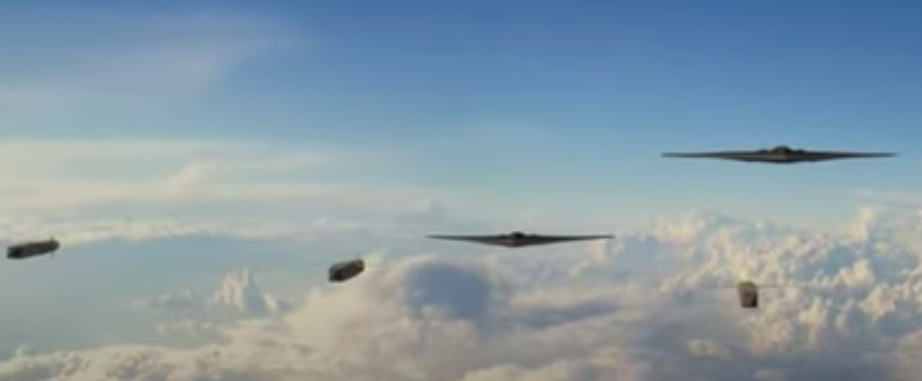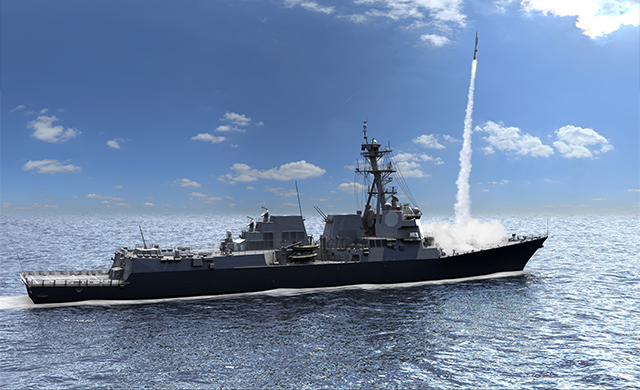
A Navy F-35C (upper left) and Hornet (lower right)
How DoD defines “legacy systems” will drive tens of billions of dollars of investment, sustainment activities, and force structure. Everyone criticizes legacy systems, and in an era of declining budgets and rising major power challengers, they are targets for cost-cutting efforts to fund modernization. But what are legacy systems? The services define legacy systems as old versions of systems that they are currently buying: an F-18 being replaced by an F-35, for instance. In contrast, many independent strategists define legacy systems as old kinds of systems―those based on outmoded operational concepts: Here, legacy might mean a manned fighter of any kind, as opposed to something truly novel, like a swarm of drones.
The debate affects all the military services. For the Air Force, the discussion will center on tactical aviation, especially the F-35; for the Navy, carriers and cruisers; for the Army, ground combat vehicles and rotary-wing aircraft. DoD’s Cost Assessment & Program Evaluation (CAPE) group will be driving the decision. It worries especially about affordability, which may induce it to incorporate some of both concepts. Finally, Congress will make the final decision, and it has its own ideas.
Everyone criticizes “legacy systems.” The Biden administration’s recently issued Interim National Security Strategic Guidance pledges “working with the Congress, [to] shift the emphasis from unneeded legacy platforms and weapon systems to free up resources for investments in the cutting-edge technologies and capabilities that will determine our military and national security advantage in the future.” Sec. Austin’s March 4 “Message to the Force” uses almost identical language: “where necessary, we will divest of legacy systems in programs that no longer meet our security needs, while investing smartly in the future.” Neither, however, specifies what systems are “legacy.”
Democrats are not alone. Republican Senator James Inhofe recently called for “moderniz[ing] or replac[ing] legacy systems.” Former Secretary of Defense Mark Esper similarly supported divesting legacy systems in light of flat defense budgets.
The service definition: old systems. The military services look at legacy systems as older systems that are being replaced with newer systems of the same variety. For example, Gen. Charles Q. Brown, the new Air Force Chief of Staff, cited the need for “ruthless prioritization,” which would retire old manned aircraft to buy new manned aircraft like the F-35, B-21, and KC-46. Indeed, the Air Force has frequently tried to shed older systems, as in the FY 2021 budget request where it tried to retire 108 older airframes.
The Navy wants to retire the aging CG-47 Ticonderoga-class cruisers and buy new surface combatants. The Navy has also sought to retire Nimitz-class carriers early but keep building the more capable Ford-class carriers.
The Marine Corps says it wants to retire “tired iron” – early-model F-18 fighters – as quickly as possible and buy F-35s.

The M2 Bradley has been repeatedly upgraded since its introduction, but after 40 years in service, the vehicle is reaching its limits.
The Army wants to replace its Bradley combat vehicle with another, modernized troop carrier, albeit a potentially self-driving one, the Optionally Manned Fighting Vehicle. Similarly, it wants to replace its Apache attack helicopters with a futuristic attack reconnaissance aircraft.
The strategists’ definition: old kinds of systems. Many strategists say that all these approaches are wrong, mired in “old think” and ignoring new ways of warfare. These strategists focus on the demands of great power conflict, particularly in the Indo-Pacific. They envision such a conflict employing a radically different set of operational concepts from past wars. Thus, they emphasize capabilities that are long-range, precision, networked, distributed, unmanned, and individually less expensive. They abhor “exquisite” systems that are extremely capable but also extremely expensive and fielded in limited numbers.
These future-oriented strategists regard as legacy even the new, more capable versions of existing platforms. Instead, they would acquire different kinds of systems. Christian Brose, for example, has described the F-35 Joint Strike Fighter and Virginia-class submarines as “legacy programs.” In his book The Kill Chain he argues for “replacing legacy platforms with large networks of autonomous systems.” He would also “replac[e] large warships with large quantities of land-based anti-ship missiles [and] replac[e] ground systems with networks of unmanned combat aircraft” – that is, swarming drones.
T.X. Hammes has similarly argued that “by employing air, land, and sea legacy systems that have been dominant in their domains for over 70 years, the Pentagon risks going the same way as the armored knights and battleships.” For Hammes and others, “current large warships and manned aircraft” are all legacy weapons. Instead, Hammes recommends that the services experiment ruthlessly and incorporate autonomous systems.
Susanna Blume has focused especially on “kill chains” and their supporting sensors and shooters. Regarding the Army, she has referred to the UH-60 Blackhawk helicopters, Joint Light Tactical Vehicles, and upgrades to the M-1 Abrams and Bradley vehicles as legacy systems. Instead, she calls for increased R&D in unmanned vehicles, along with manned-unmanned teaming.

USS Gerald R. Ford conducts high-speed turns in the Atlantic.
Many of these strategists see aircraft carriers themselves as a legacy platform that is increasingly expensive and requiring more next generation systems to defend. Naval strategist Jerry Hendrix is blunt: “[the Navy] needs to stop building aircraft carriers….Rather than dedicate such new technologies as directed energy, electromagnetic rail guns, and hypersonic propulsion systems to propping up and defending a legacy platform, it should free these systems to find a place in a revolutionary new fleet that is marked by lower costs and ruthless efficiency.”
Money eased the tension during the Trump administration. The 2018 National Defense Strategy leaned towards the strategists’ perspective: “We cannot expect success fighting tomorrow’s conflicts with yesterday’s weapons or equipment.” However, it never got enough traction to make major changes in acquisition as the services continued to invest in their flagship programs. The Army bought ground combat vehicles and rotary-wing aircraft. The Navy bought carriers, surface combatants, and submarines. The Air Force bought manned fighters and bombers. In part, the services did not need to choose because the rising budget allowed both continuation of the existing modernization programs and investments in new concepts.
As part of these new concepts, all the services experimented with new unmanned systems – Air Force Skyborg, Navy MQ-25, unmanned surface/subsurface vehicles, Army and Marine Corps unmanned ground vehicles – and invested in long-range precision munitions. They also added less costly, often smaller systems where that did not detract from the flagship systems but which implemented what the strategist camp would consider new operational concepts. Thus, the Navy instituted a new frigate program and a light amphibious warfare ship, the Air Force bought some F-15EXs, and the Army considered the Mobile Protected Firepower light tank.

AFRL image of autonomous swarming munitions
Concepts will clash in the new DoD reviews. Tightening budgets will force a clash between the dueling definitions of legacy. The Trump administration forecast a defense budget that was level in constant dollars. The consensus on the Biden administration defense budget envisions a modest cut. In addition to these external pressures, rising compensation costs needed to compete for labor in the open market and the inexorable increase in operations and maintenance costs put internal pressure on the budget.
To prepare an FY 2022 budget submission, expected in late April or early May, DoD has announced reviews of global force posture, tactical aviation, naval forces, and long-range fires. Battles over the interpretation of “legacy” will play out in these reviews.
CAPE will adjudicate the dispute. The Cost Assessment and Program Evaluation office in the Office of the Secretary of Defense (OSD) will lead many of these reviews. It has immense analytic power, but its influence waxes and wanes with its relationship to the senior leadership. That influence looks like it will increase as many commentators, including some in the administration, have decried a perceived imbalance between military advice, often embodied in the Joint Staff, and civilian advice embodied in OSD.
CAPE has traditionally worried about long-term affordability. That may drive it to adopt elements of both definitions of “legacy.” Consistent with the service definition, it has often proposed upgraded current systems in the past: Thus, it championed the “fourth generation plus” F-15EX because of its lower sustainment cost compared to the “fifth generation” F-35, even though acquisition cost was about the same. It may support upgrades of other systems as a low-cost mechanism to maintain force structure. There may similarly be an effort to constrain requirements on new systems. That might lead to an effort to redefine NGAD as a low-cost F-16 replacement (which the F-35 was originally supposed to be) rather than a high-end, expensive F-22 replacement.

SM-6 Launch
Consistent with the strategist view, CAPE will likely emphasize long-range precision strike rather than manned platforms that penetrate adversary air space. Thus, CAPE may recommend procuring missile systems like JASM/LRASM, SM-6, and Tomahawk that can be fired from existing platforms that stay outside of an adversary’s air defenses. That may raise questions about the B-21 bomber, whose stealthy characteristics are designed to take it deep into adversary air space. In a similar vein, CAPE may propose broader adoption of low-cost unmanned systems.
CAPE will likely be willing to shrink force size. In its showdown with Secretary of the Navy in 2015, CAPE was willing to cut older ships and shrink fleet size to invest the savings in modernizing the remaining force.
Congress has its own views. As members of Congress note, the president proposes, and Congress disposes. Thus, Congress will have the last word. However, it is unlikely to support radical changes in structure now that its principal maverick thinker, Sen. John McCain, has passed from the scene.
Congress has frequently balked at retiring large numbers of older systems, particularly if that makes the force smaller. For example, it has called for a 355-ship fleet and consistently pushed the Navy to modernize rather than retire the CG-47 cruisers. It also refused to allow the Air Force to retire the A-10 fleet. In part, parochial interests drove these decisions. For the A-10s, many aircraft reside in the Guard and reserves, which have strong local constituencies. However, Congress also reflects broader concerns. All the services have cited the need for larger structures to meet both wartime and day-to-day combatant command requirements. Congress is sensitive to stress on servicemembers, which increases if the force gets significantly smaller without a reduction.
Watch the FY 2022 budget. The FY 2022 budget will provide a first peek at how the administration views “legacy.” Because there is not much time available to do analysis and reach decisions, the administration might make a few changes in FY 2022 and leave the rest to the FY 2023 budget. That will enable incorporation of the results of the administration’s strategic review. (Publication expected late in 2021 or in early February with the FY 2023 budget.) On the other hand, they may opt for a Gates-like budget stroke that incorporates all the major changes in one package.
One early warning sign of major change: Watch for officials signing nondisclosure agreements. That was Sec. Gates’s mechanism for ensuring secrecy before revealing the big cut.
Connecticut lawmakers to grill Army, Lockheed about job cuts at Sikorsky helicopter unit
“The Connecticut delegation has questions about why, with that [FY24] appropriation in hand, this happened,” said Rep. Joe Courtney, D-Conn.


























